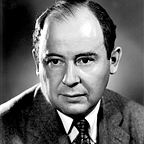Superintelligence
Applying Construal Level Theory to Enhance Learning
How to learn faster and easier while promoting creativity
From Wikipedia:
Construal level theory (CLT) is a theory in social psychology that describes the relation between psychological distance and the extent to which people’s thinking (e.g., about objects and events) is abstract or concrete.
Now, what the Wikipedia article doesn’t teach you, is that this theory can be perfectly used to learn faster and promote creativity in a top-down kind-of-approach.
The “levels” in CTL are essentially divided into two categories: low and high level construal. Let’s review some examples of each.
Low-Level Construal
This one is characterized by focusing on concrete details of a particular event, object, concept, etc.
Thinking about the type and brand of phone you want to buy is an example of low-level construal.
A general characteristic of low-level construals, is that they cover, link to, etc. to less other concepts e.g. the concept “Samsung phone” only covers and links to other phones of the same brand, Samsung.
